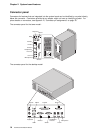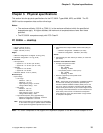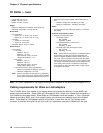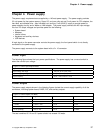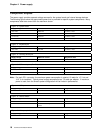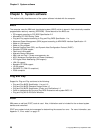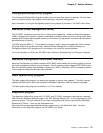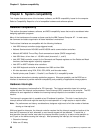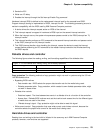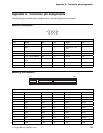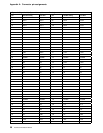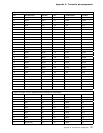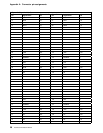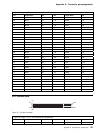
Chapter 6. System compatibility
Chapter 6. System compatibility
This chapter discusses some of the hardware, software, and BIOS compatibility issues for the computer.
Refer to
Compatibility Report
for a list of compatible hardware and software options.
Hardware compatibility
This section discusses hardware, software, and BIOS compatibility issues that must be considered when
designing application programs.
Many of the interfaces are the same as those used by the IBM Personal Computer AT. In most cases,
the command and status organization of these interfaces is maintained.
The functional interfaces are compatible with the following interfaces:
Intel 8259 interrupt controllers (edge-triggered mode)
National Semiconductor NS16450 and NS16550A serial communication controllers
Motorola MC146818 Time of Day Clock command and status (CMOS reorganized)
Intel 8254 timer, driven from a 1.193 MHz clock (channels 0, 1, and 2)
Intel 8237 DMA controller, except for the Command and Request registers and the Rotate and Mask
functions; the Mode register is partially supported
Intel 8272 or 82077 diskette drive controllers
Intel 8042 keyboard controller at addresses hex 0060 and hex 0064
All video standards using VGA, EGA, CGA, MDA, and Hercules modes
Parallel printer ports (Parallel 1, Parallel 2, and Parallel 3) in compatibility mode
Use the above information to develop application programs. Whenever possible, use the BIOS as an
interface to hardware to provide maximum compatibility and portability of applications among systems.
Hardware interrupts
Hardware interrupts are level-sensitive for PCI interrupts. The interrupt controller clears its in-service
register bit when the interrupt routine sends an End-of-Interrupt (EOI) command to the controller. The EOI
command is sent regardless of whether the incoming interrupt request to the controller is active or
inactive.
The interrupt-in-progress latch is readable at an I/O-address bit position. This latch is read during the
interrupt service routine and might be reset by the read operation or it might require an explicit reset.
Note: For performance and latency considerations, designers might want to limit the number of devices
sharing an interrupt level.
With level-sensitive interrupts, the interrupt controller requires that the interrupt request be inactive at the
time the EOI command is sent; otherwise, a new interrupt request will be detected. To avoid this, a
level-sensitive interrupt handler must clear the interrupt condition (usually by a read or write operation to
an I/O port on the device causing the interrupt). After processing the interrupt, the interrupt handler:
1. Clears the interrupt
2. Waits one I/O delay
22 Copyright IBM Corp. September 1999



